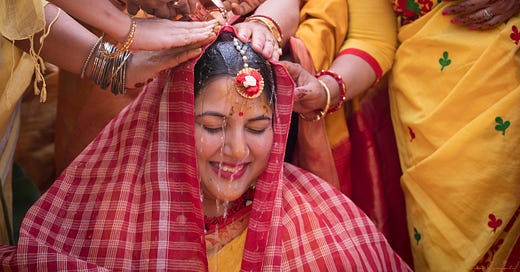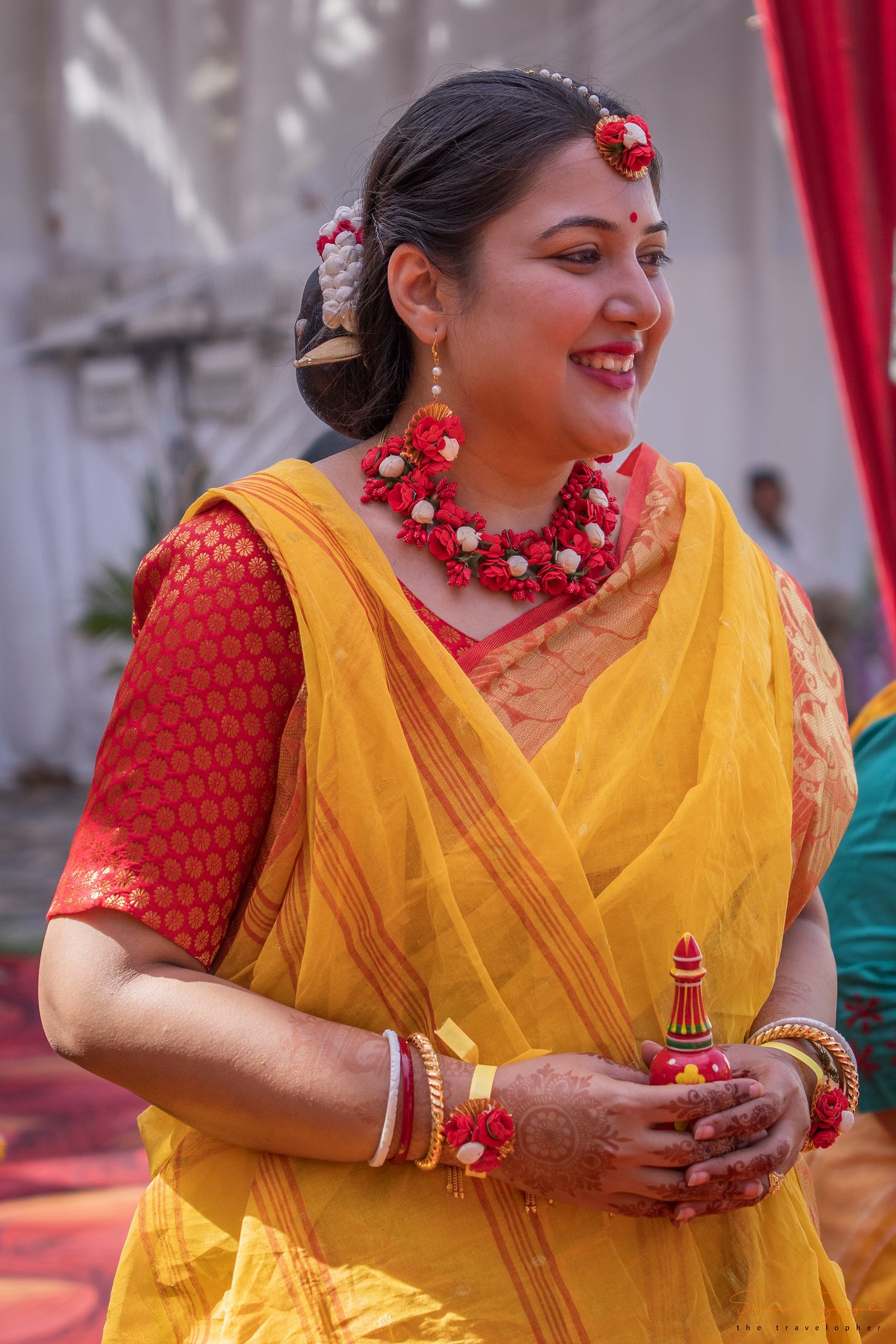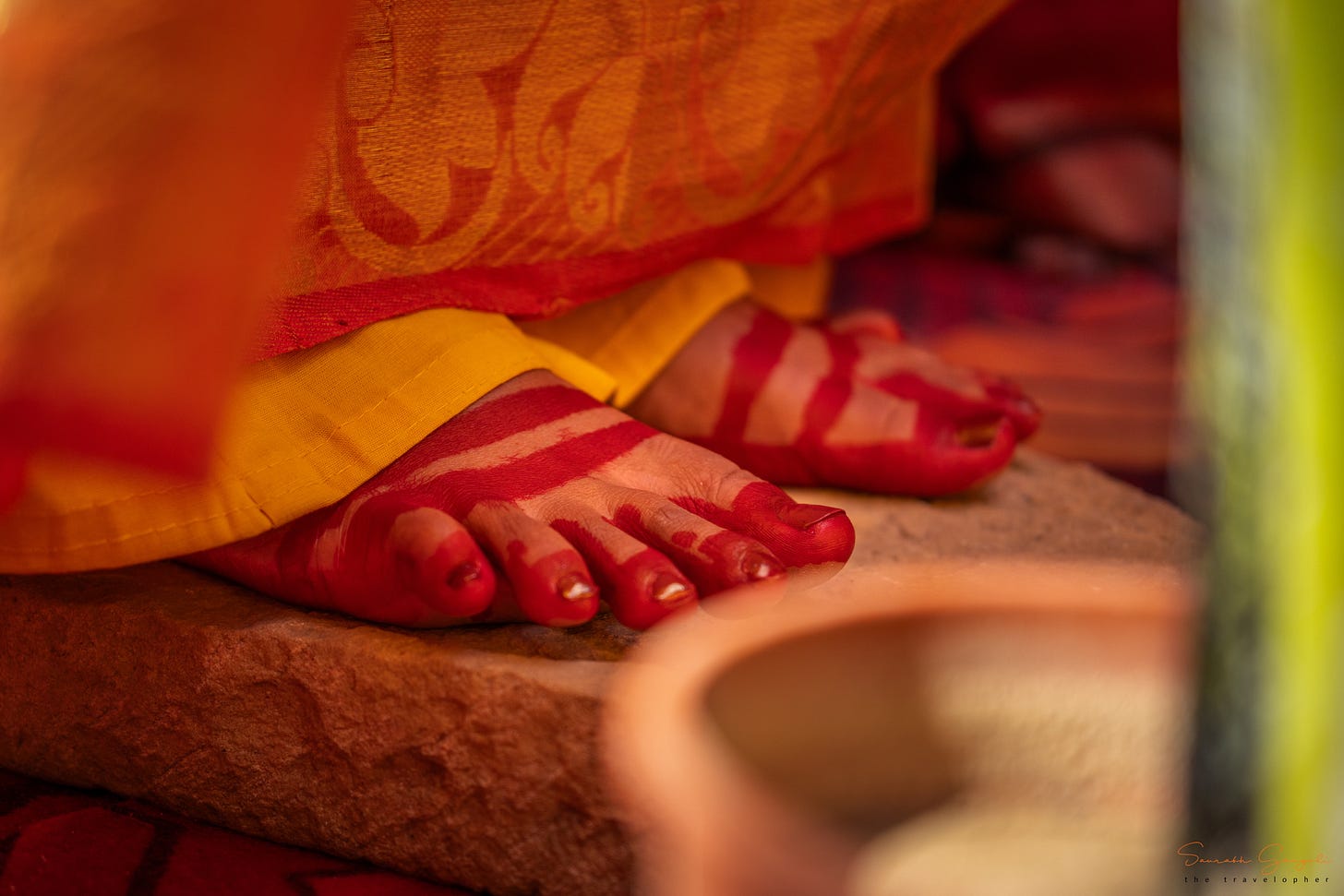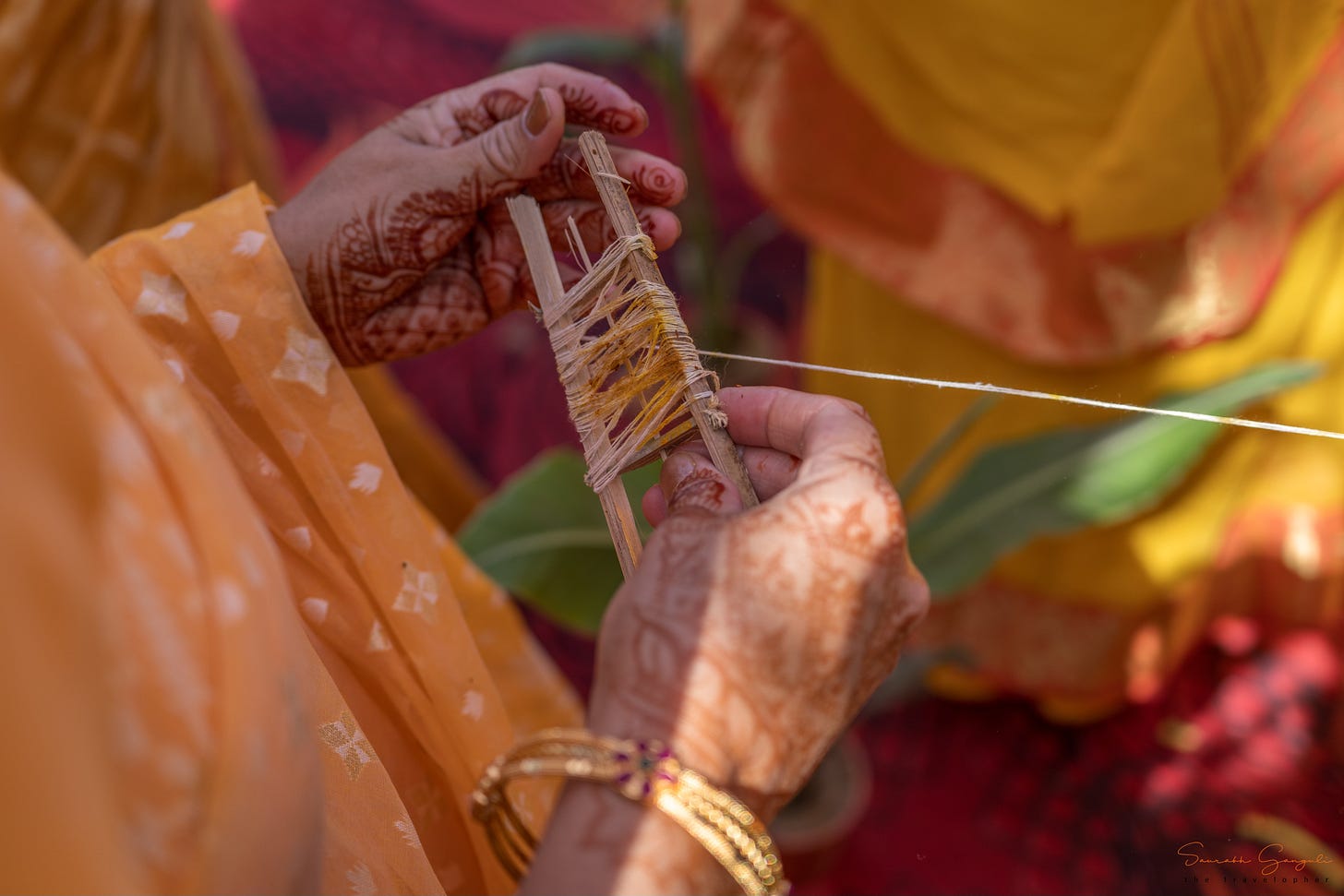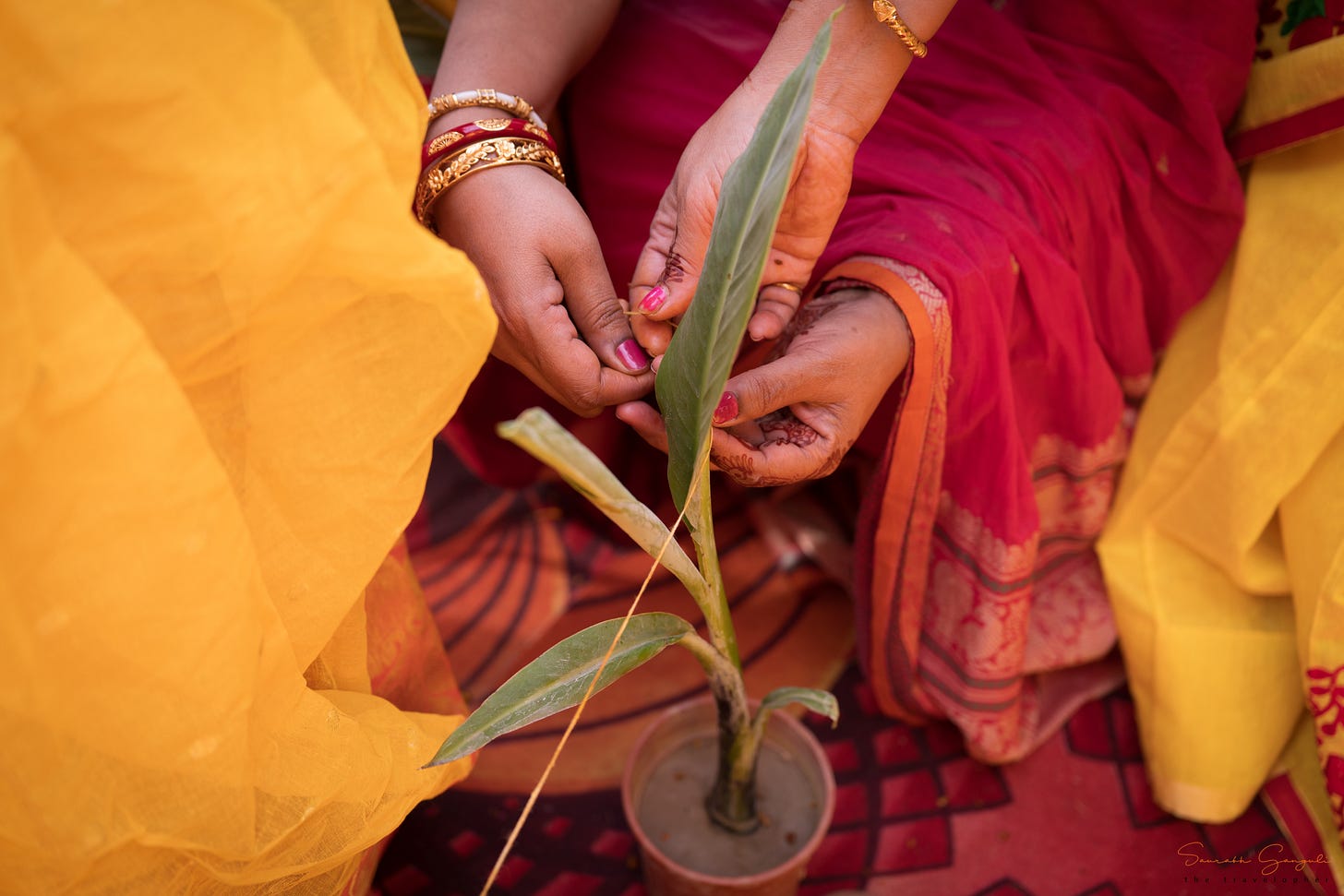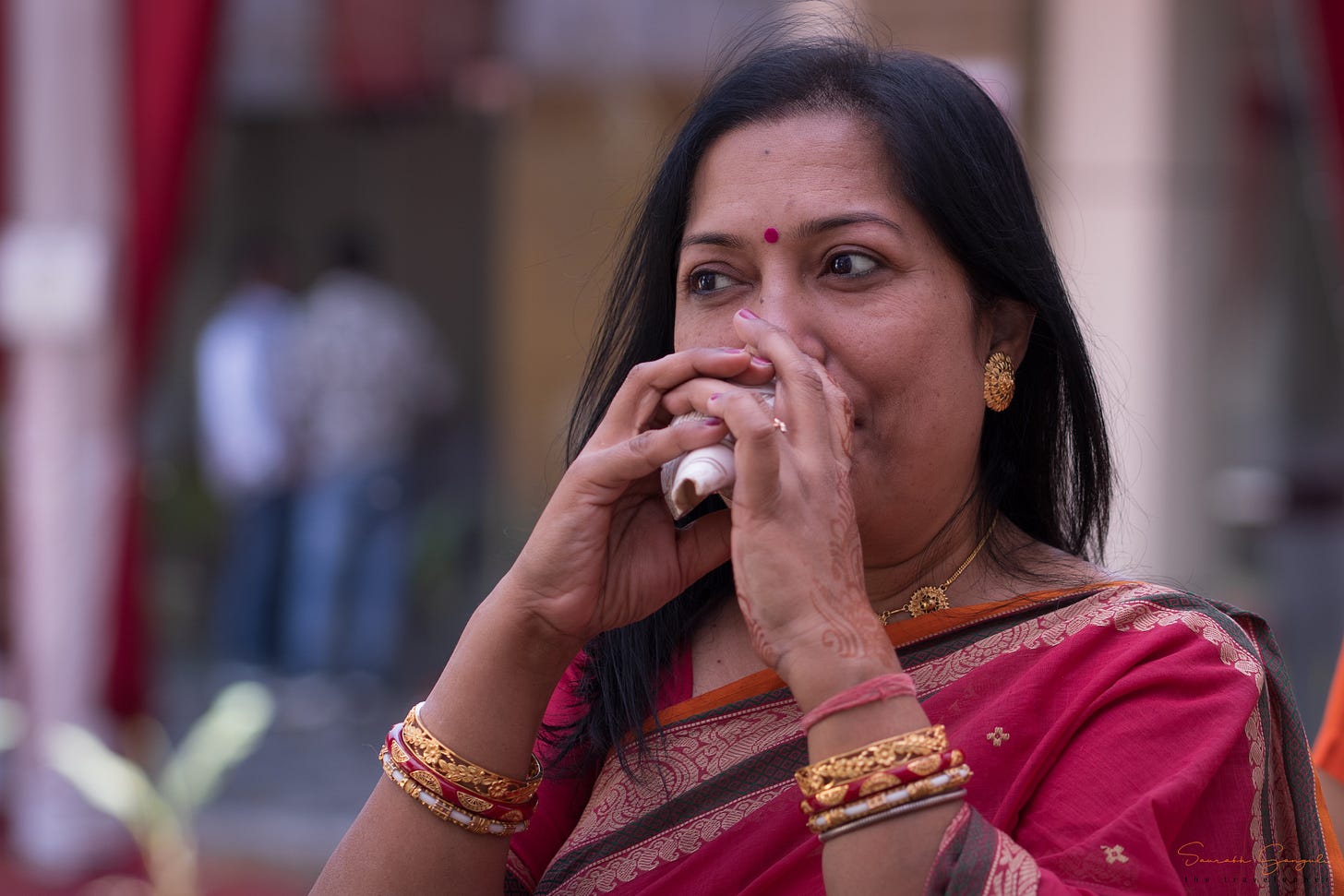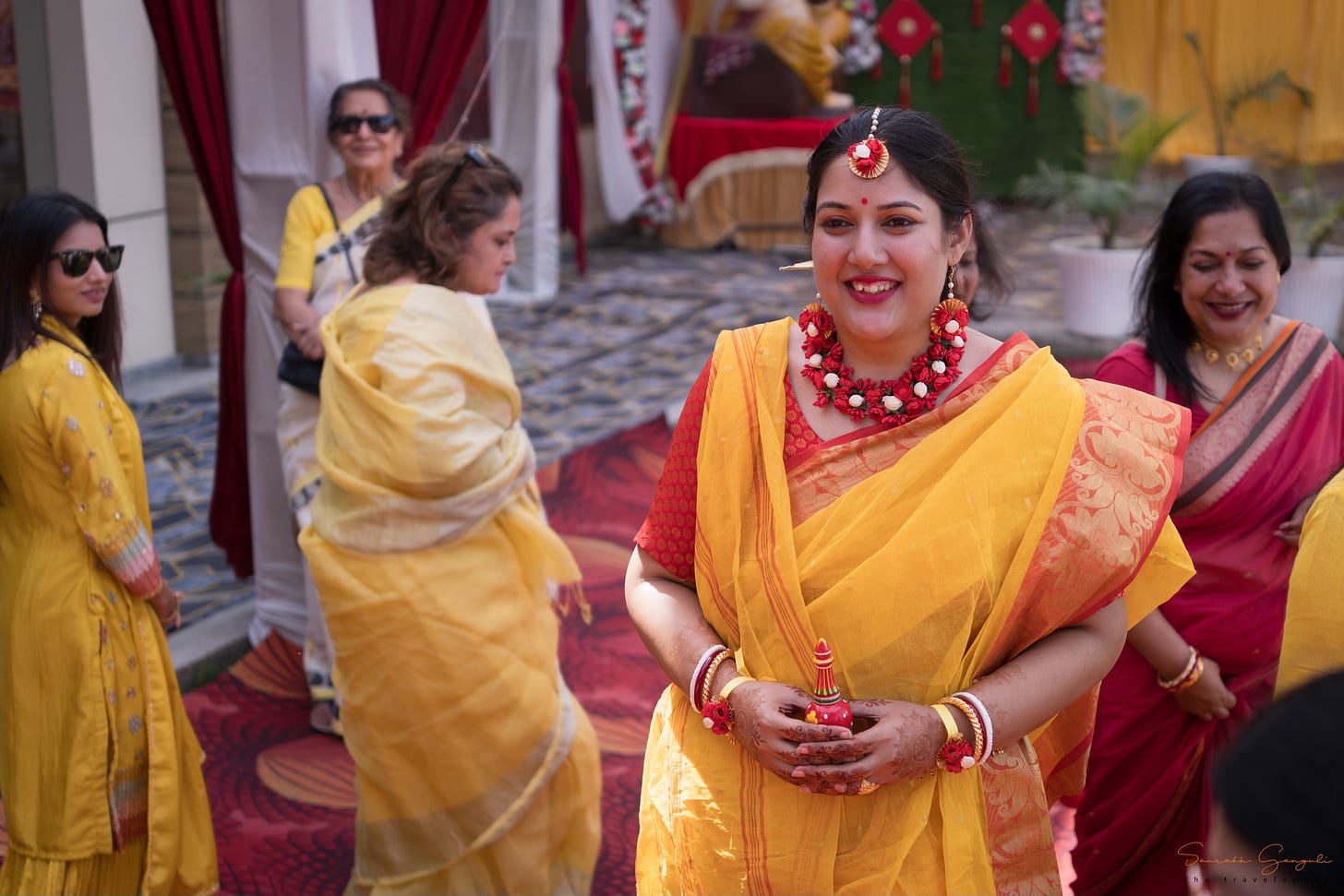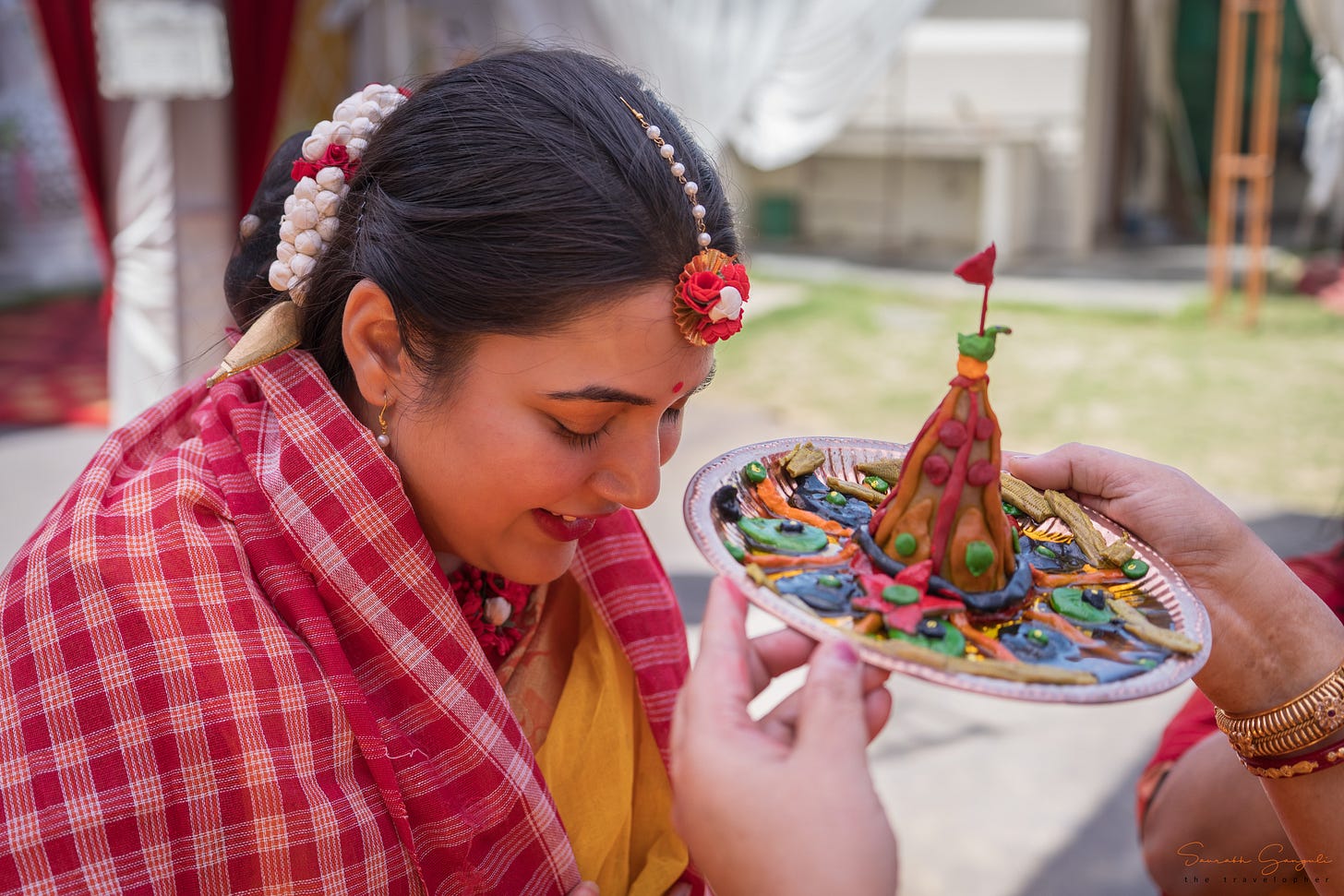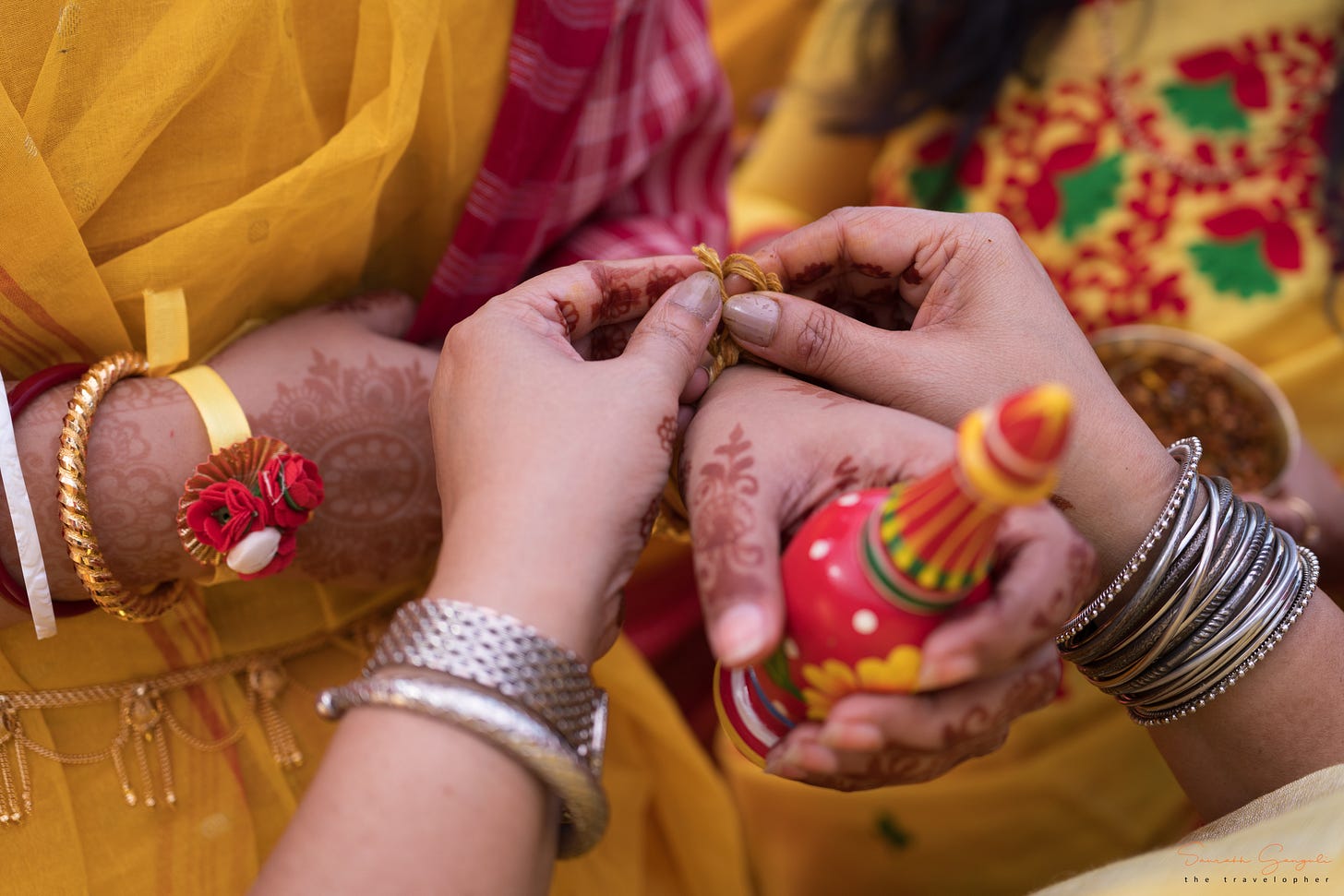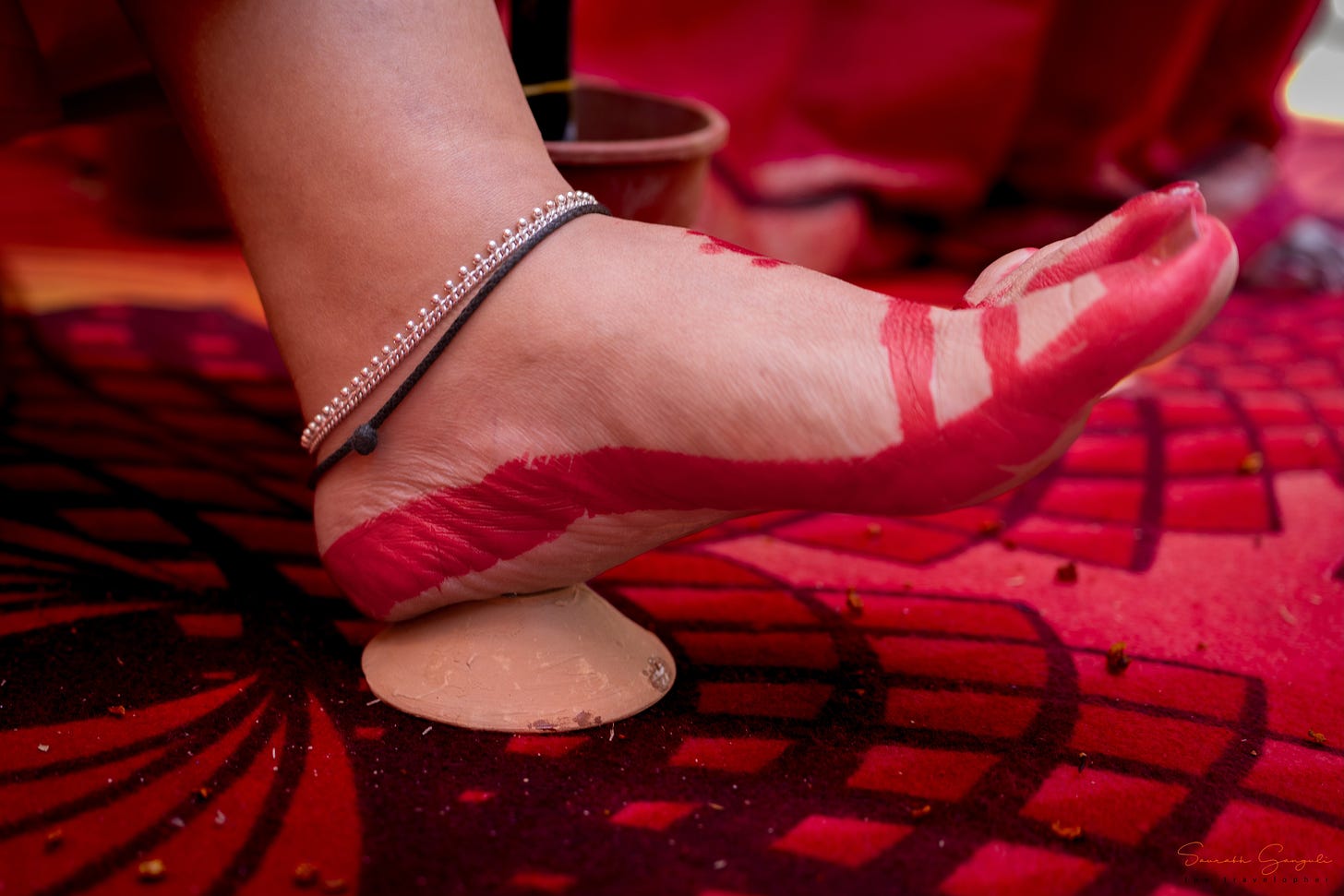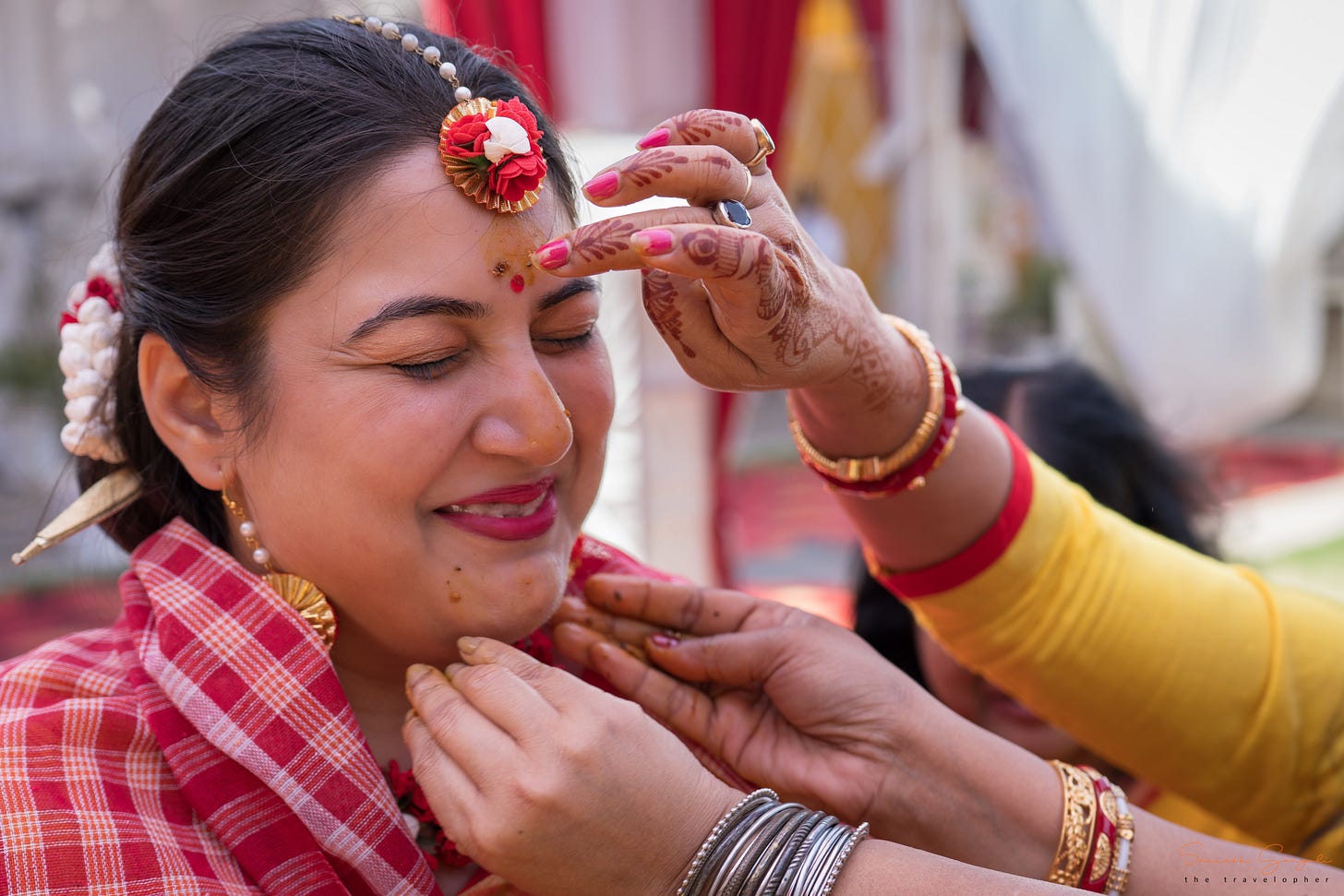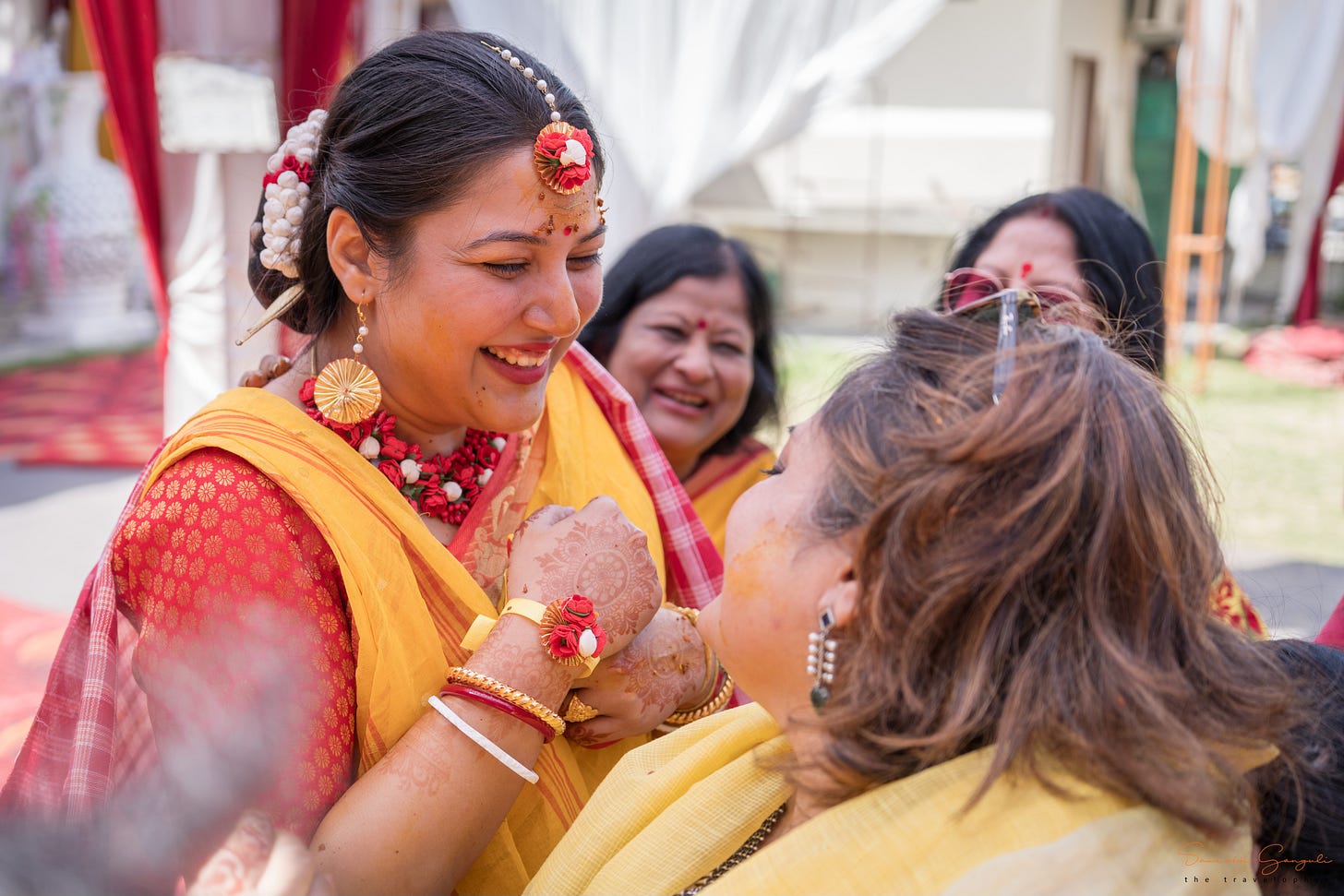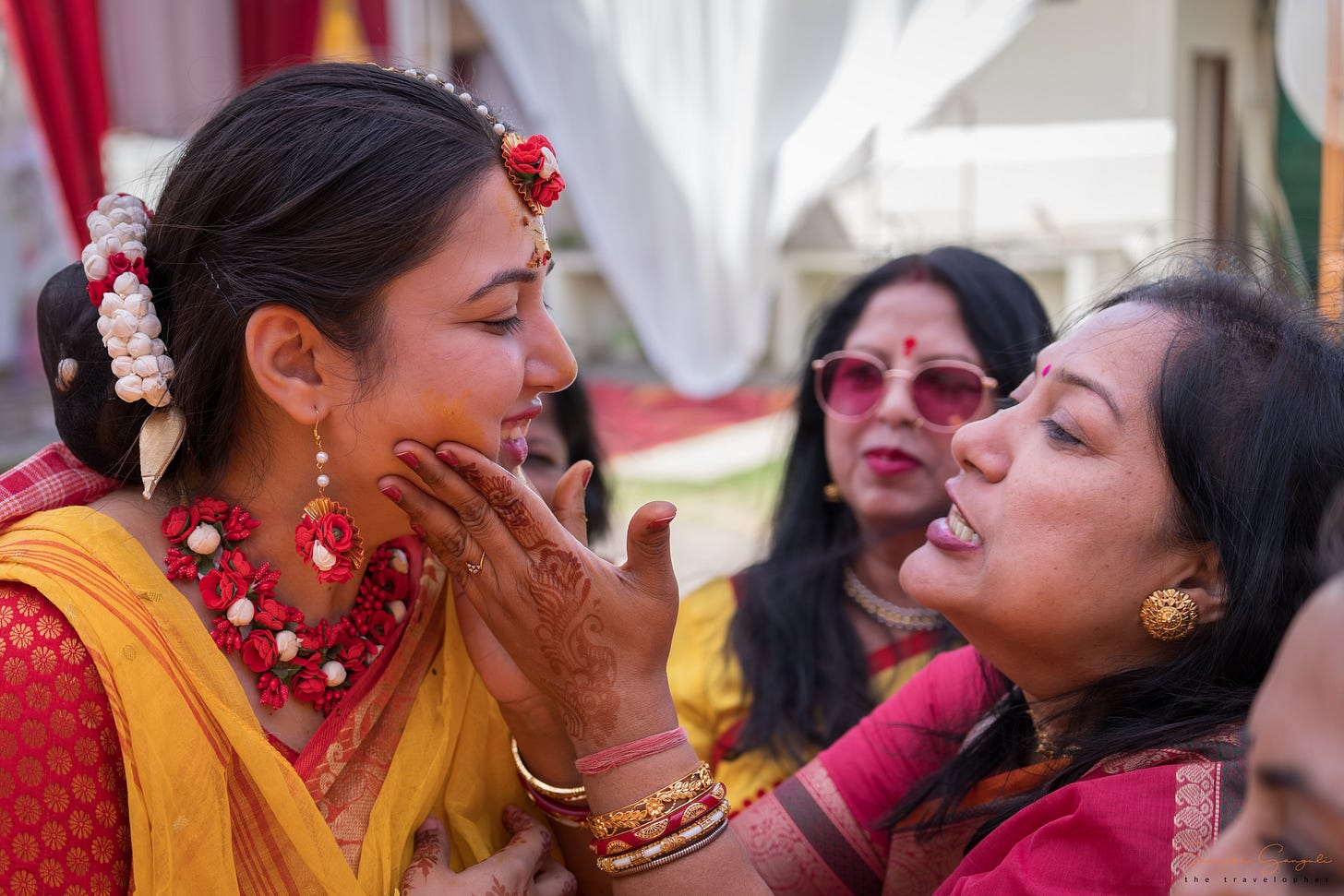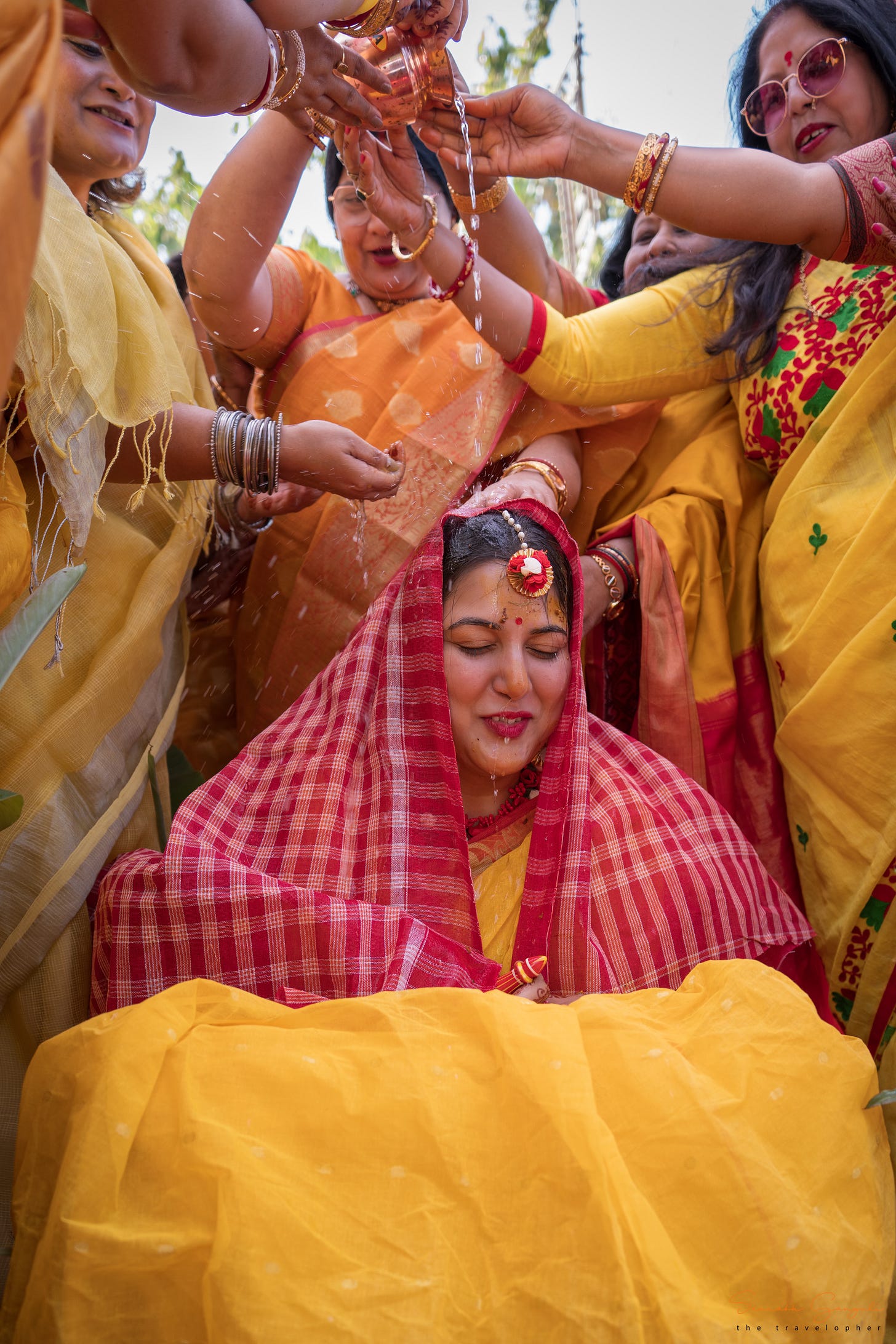She steps onto the sheel, a sacred grinding stone, as four banana plants stand at its corners.
Around her, married women dip a sacred thread into turmeric, its fibres absorbing the blessings of generations.
With practiced hands, they tie it around the plants, enclosing the bride in a cocoon of protection and love.
The air erupts with the sharp cry of shankh (conch shells) and the rhythmic ullu (ululation) of the women.
Seven times, they circle her, their laughter and chants weaving invisible blessings into the thread that binds her.
Then, the matriarch steps forward with the boron dala, a ceremonial plate carrying rice, turmeric, and a flickering lamp. With quiet reverence, she circles the bride, her whispered prayers sealing the moment with grace.
The sacred thread, is untied and bound tightly around the bride’s wrist, a symbol of protection and continuity.
Then, with quiet determination, the bride steps forward and crushes the earthen khuris (earthen pots) at the base of each banana plant, declaring, “Aiburo naam khondalaam!”—the symbolic farewell to her unmarried self. The past crumbles beneath her feet, making way for her future.
Laughter erupts as turmeric leaps from palms onto the bride’s face, arms, and forehead. Mischief takes over, and soon, the women smear holud (turmeric) onto each other, their joy spilling into the golden air.
Finally, pitchers of fragrant water are poured over the bride, washing away the turmeric but leaving behind the glow of love, the warmth of tradition, and the promise of a new beginning.
The bride stands cleansed, not just in body, but in spirit—glowing, radiant, and wrapped in the golden embrace of care and tradition.

